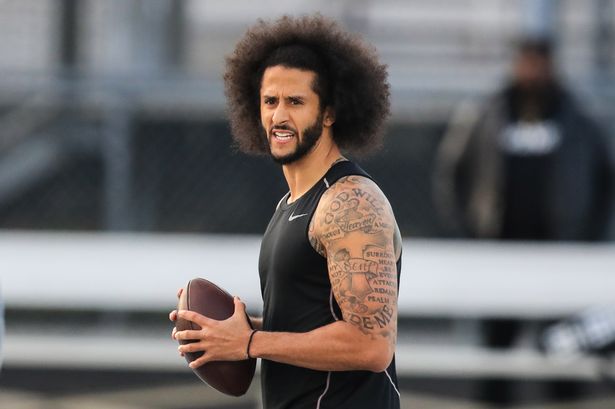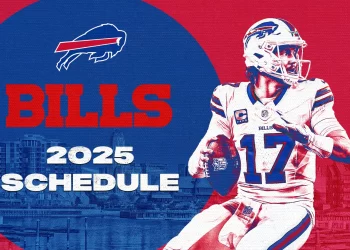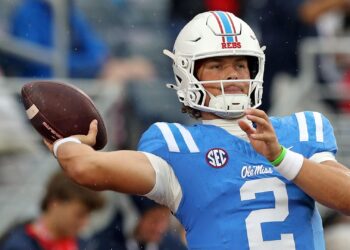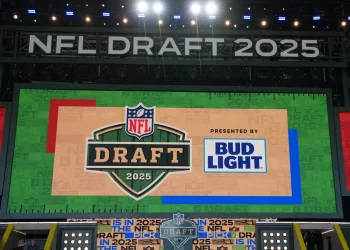By: Zachary Draves
When Colin Kaepernick took the field in Atlanta during his unorthodox tryout for NFL scouts, he made it clear that he was following the ethos of 1972 Presidential Candidate Shirley Chisholm, that he was unbought and unbossed.
The former backup quarterback turned social justice icon who hasn’t been in the league for three years took the opportunity to say to the NFL that he and what he stands for is not to be co-opted by a league that shies away from confronting issues of race as well as systemically colluded to keep him out.
The whole saga was a mess from the start.
First, Colin and his team were given a short three days’ notice to come to Atlanta and tryout.
He was told that he would work with a coach and a group of receivers that were not of his choosing.
Then, the league scheduled the tryout for a Saturday as opposed to the standard Tuesday, given that on Saturdays, scouts are prepping for Sunday and/or examining college games.
In addition, Colin was ordered to sign a broader waiver that essentially prevents him from suing the league or holding them accountable in any capacity should he be signed to a team.
Finally, Roger Goodell ordered that the workout be closed to the public. No press would document the event.
Essentially, this was simply a pathetic attempt on the part of the NFL to force Colin into a position where he would kowtow to their ways and make them look good optically.
Let’s not forget that this is an institution that demands and expects conformity and obedience from its players, who don’t have guaranteed contracts.
But Colin saw through the charade and like Alexander the Great, conquered over the empire.
He changed the location of the tryout to a local high school in Atlanta as opposed to the Falcons’ training facility as the league had intended.
He brought his own team of receivers and he allowed for the press to be present and document it.
Much of it was live-streamed on social media.
That strategy was crucial because he and his team took control over the narrative as opposed to traditional media outlets who constantly spin the story to fit their motives in the name of ratings.
This speaks much to the heart over the use of social media by athletes in this new era of athlete activism as ESPN’s the Undefeated recently addressed https://theundefeated.com/features/athletes-and-the-quest-for-balance-on-social-media/
What was more compelling and arguably powerful was the Colin showed up to the tryout wearing his now-iconic Afro and a shirt reading Kunta Kinte, in homage to LeVar Burton’s iconic character in the 1970’s miniseries Roots.
He also donned a red, green, and black button to symbolize African pride.
That was a significant display of activism in it of itself because of the usage of symbols, aesthetics, and fashion to make a political and social statement.
We don’t have to look too far and see how style has been intertwined with activism.
For example, the Black Panther Party for Self-Defense in the 1960s, wearing black berets, black leather jackets, dark shades, and afros, was the walking epitome of this particular prototype of effecting change.
Also, athletes such as Bill Russell, Kareem Abdul Jabbar, and Jim Brown stood out when they publicly wore dashikis to acknowledge their cultural heritage.
Furthermore, Tommie Smith and John Carlos in their iconic black power salute at the 1968 Olympics also played with the use of accessories.
Each man took their shoes off to make a statement about poverty in Black America.
John wore beads around his neck to honor those who were lynched and he opened up his jacket to show solidarity for working-class people of all colors.
Tommie wore a scarf around his neck to remember victims of lynching as well.
Recently LeBron James and other NBA players wore t-shirts saying I Can’t Breathe out of respect for Eric Garner who was unjustly killed by NYPD in the summer of 2014.
WNBA players Maya Moore, Tina Charles, and Tamika Catchings were among the players who wore t-shirts in the aftermath of the killings of Alton Sterling, Philando Castile, and five Dallas police officers.
What remains is uncertain, but one thing is clear, and that is that Colin Kaepernick has shown that he is ready to play and is wanting to play.
He is not falling into the trap that the NFL has set and he will not go down.
He carries the rich tradition of athletes standing for greater things on his 32-year-old shoulders and he won’t let it die on his watch.
In the end, he is like Kunta Kinta as well as Sidney Poitier’s character Virgil Tibbs in the 1967 Academy Award-winning classic In The Heat of the Night in the sense that he demanded respect for who he is.
In the face of turmoil, he unapologetically stood his ground.


 NFL
NFL






Colin Kaepernick vs #NFL100 Owners – Beneficiaries #PaidPatriotism *Per United States Government Investigation* https://nutsandboltssports.com/civil-unrest-colin-kaepernick-versus-the-nfl-owners/
Great work on your article!